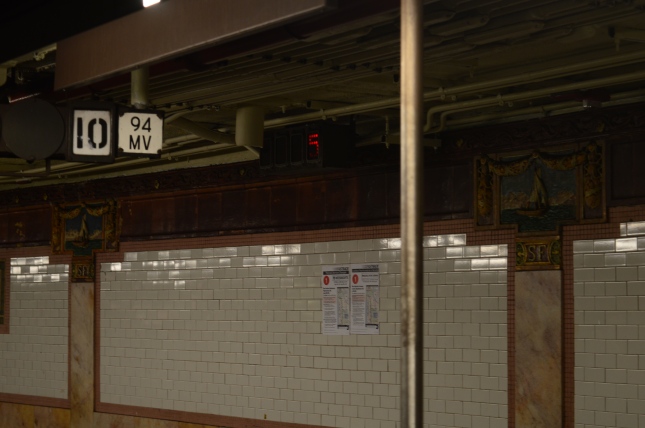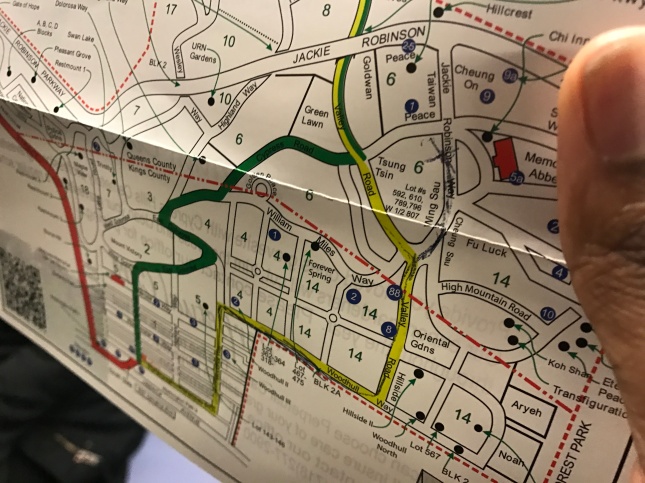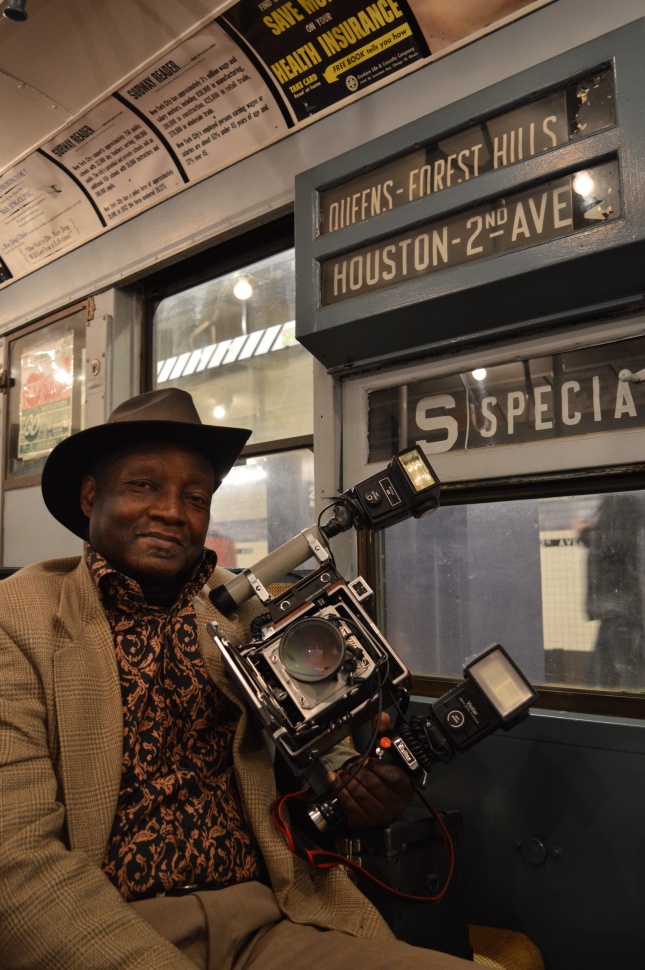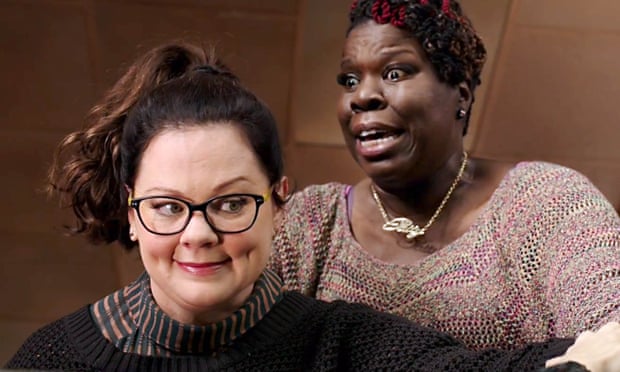In this post about this great metropolis, I’m heading deep underground to two of New York City’s interesting subway stations; City Hall and South Ferry. The reason why they are interesting is because they are not exactly in a straight line.
In fact, they are loops.
The first is one of the most beautiful underground spaces in New York. The second station, while a bit simpler, has managed to last the test of time and even get a second life.
But first a throwback.

City Hall before opening day. image from viewing.nyc
It’s 1900 and the first shovel spade is dug into the earth in front of City Hall on March 24th of that year. The planned 9 mile subway line would stretch from City Hall up to the booming neighborhood of Harlem.
The City Hall stop was to be used for local trains running to Harlem and later on The Bronx. While express trains would continue to Brooklyn. If you are wondering why that was the case, consider the fact that Broadway is a very narrow street and it would have been expensive to dig a four-track subway under Broadway. They would have to widened the street which would have lead to the loss of valuable real estate and cost more money.
To convince people to go underground, the newly formed Interborough Rapid Transit company, hired the architectural firm Heins and LaFarge to design the tilework for City Hall and the other stations on the inaugural line. The firm, in turn, hired Rafael Guastavino and his tile company for the sole purpose of tiling City Hall.

View of the ceiling
Guastavino is often referred to as a genius in his designs. Using tiles that were layered like a cake, Guastavino’s tiles were considered structurally superior to traditional Roman Barrel style Arches that required the use of large stones to support the arch.
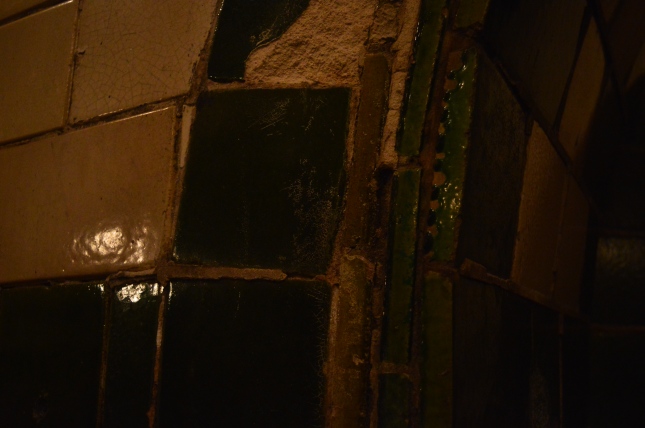
Guastavino’s tiles at work
It was a cheaper and by all accounts more attractive method of construction. While Guastavino tiles usually come in white or eggshell, the station has a beautiful green and orange poly-chrome tiles that are pleasing to the eye.
The station also has a Guastavino hallmark. Since the tiles are layered the ones that are not used for display would have have had groove like striations on the tile to place the grout. When Guastavino was in his workshop one day, a client for another job remarked that the pattern was perfect and it has been placed on almost every tile ever since.
The station is also a massive feat of engineering. The station alone sits on a 147 degree angle. This was done to accommodate the City Hall building itself and the former Post Office that sat on the southern edge of the park. The tracks also had to go under the express trains that were heading to Brooklyn.

Inside the City Hall station
City Hall and the other stations on the line opened to the public on October 27, 1904. A ceremony was held at the station and as the legend goes Mayor George B. McClellan Jr., so intoxicated by controlling the train, he refused to give up the controls until the train reached 103rd Street, 7 miles away.
Passenger and guests of the ceremony were treated to not only the tiles but chandelier fixtures and skylights.

Favorite piece of the station the Skylight
However despite the station putting on a good show for the 15,000 ticketed guests, the next day the station was nearly empty.
It would be the station’s fate for the next four decades until it closed to traffic on December 31, 1945, at 9 p.m. with little fanfare save for an obituary like report in the New York Times.
The average daily ridership was around 600 and the station closed early when local service was sent to our next location. The South Ferry Station.
They were other factors that lead to the closure of City Hall as well. The limited amount of space between City Hall and the Post Office building, the inability to expand the station and the aforementioned close proximity of the Brooklyn Bridge station lead to the stations rather small ridership.
The South Ferry stop is located near the Battery, a local city park. The Battery is where you pick up ferries either leading to the Statue of Liberty, Staten Island and now Governors Island. The area has long been a transit hub in one way or another when back in the day all of Manhattan’s elevated trains, the 2nd, 3rd, 6th and 9th Avenue elevated trains all terminated here.

Elevated Station at South Ferry
The South Ferry stop first opened on July 10, 1905. Over the years a variety of services, from the original subway line to a mix of both the present day Lexington and 7th Avenue IRT lines. In 1918, after the 7th Avenue line was completed a second inner loop platform was constructed for extra Lexington Avenue trains at rush hour. After 1977, the station became exclusively a 7th Avenue station when a rush hour shuttle service and late night 6 train service ended due to lack of ridership and budget cuts.

Tiles demarcating South Ferry in the Serif font
The inner loop station was known for only using the central door for passenger access due to the extremely sharp curve. To lessen the noise, the station was walled with only door slots.
The outer loop was also designed by the firm of Heins and LaFarge. Stations like City Hall and South Ferry used different color patterns or styles and different symbols to help riders on their journey’s. This was to help immigrants, who had limited command of the English language. A boat was to symbolize that one could get off and take the ferry.

While, City Hall station remained closed and forgotten, South Ferry dutifully did it’s role in the commuting patterns of New Yorkers for generations. Unlike City Hall, which was too close to the neighboring Brooklyn Bridge station, which was connected to the elevated trains to Brooklyn, South Ferry had the Staten Island Ferry, which remains the most direct way to reach the borough of Staten Island without a car.
Over the years the IRT and subsequent transit agency’s that inherited the station didn’t really pursue any major changes to the station. Other than perhaps the occasional renovation or two, trains continued to screech around the curve.

1 train returning uptown. Notice the gap fillers and the fences around the platform to prevent passengers from falling.
Compared to City Hall, the South Ferry Loop stop had an altogether different fate. The American’s with Disabilities Act came in the 1990’s. Dictating that public facilities had to accommodate people’s with disabilities, it became clear that the station had to be upgraded due to it’s proximity to the ferry. Unfortunately, for the old loop an extension was not in the cards. Instead, a new station was built underneath the old one. This allowed for the connection of the ‘R’ line. A connection that was previously never attempted.

Diagram of the South Ferry area with new station.
The new station, which opened in 2009, was equipped with the much needed elevators, a better ventilation system and a platform for the entire train. Compared to the original station however, the replacement left little to the imagination and looked very dull. One bright spot was a piece of the original fort wall was excavated and preserved for passengers to look at.
The old station was closed down and was used for storage of trains during non peak periods and for a time, tours from the Transit Museum. That all changed when an unexpected event gave the old loop station a second life.
Due to the already existing infrastructure at South Ferry, the MTA decided to dig deeper for the new station, however this leaves the new station vulnerable to major storms. Case in point Hurricane Sandy. It flooded the new station up to the ceiling and destroyed equipment needed to send trains into and out of the station.
The older station, while flooded, was surprisingly undamaged. The April of the following year the old loop reopened as a replacement until the new station is rebuilt from scratch, with the necessary hurricane proofing to prevent future service disruptions.
In a strange bit of irony, if the new station wasn’t built, the old loop stop would have borne the brunt of the damage.
So while Staten Island commuters have to contend with the screech for another year, I like the idea of looking at the old tiles all for the price of a subway fare.

Platform View
As for City Hall there are only two ways to get there either via a tour by the museum which requires full membership. Photography is allowed but it’s advised to be mindful about using flash photography and no tripods.
You can go to the Transit Museums website for more information.
The second option is to take the 6 train itself. Over the years the MTA has relaxed its ban on people staying on the train beyond Brooklyn Bridge-City Hall. They only request that you stay inside the train as a safety precaution due to the sharp curve. Its fast but if your in town on a day that is not the tour it will do the trick. Try to go in the afternoon to get the skylight effect.

6 train passing through. Here’s my failed attempt at long exposure shot.
As someone who has done both, the tour is worth the $50.00 due to simply because you’re in the station for at least 45 minutes and despite the noise you can appreciate the station’s full beauty.
While City Hall’s future is secured South Ferry’s third act is yet to be determined. It’s possible they might return to giving tours of the station but they will be one thing missing.
The screech.



